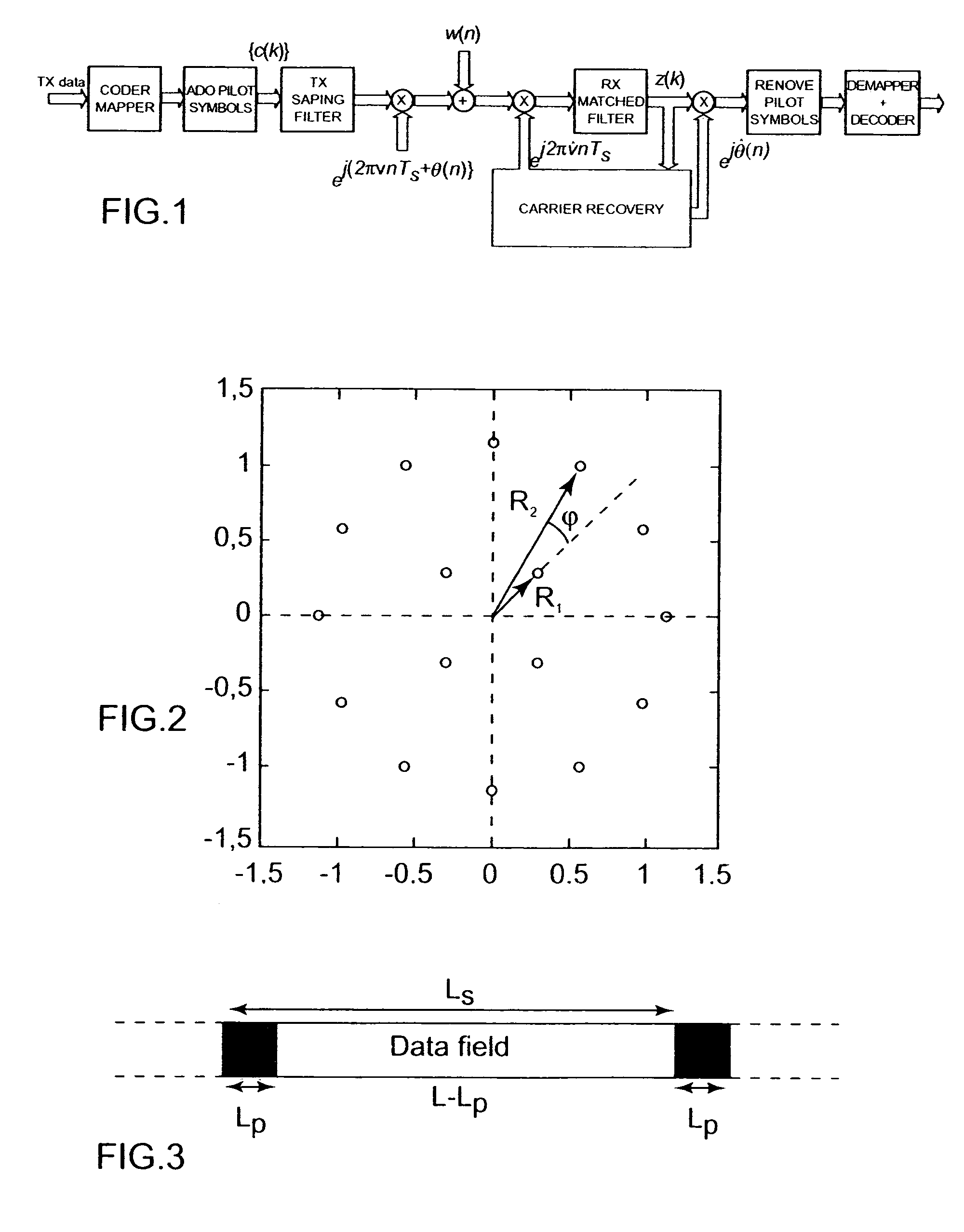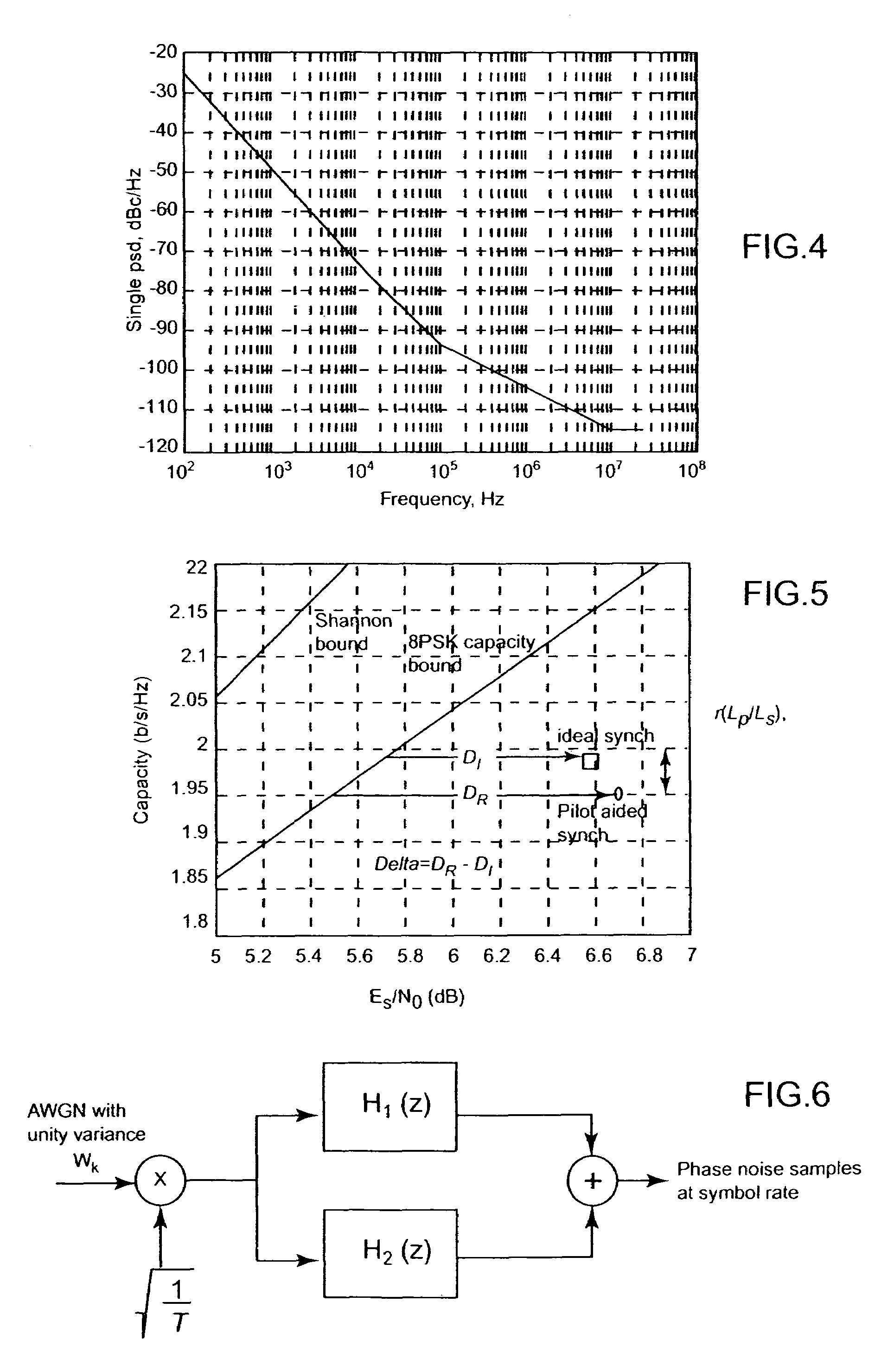Process for providing a pilot aided phase recovery of a carrier
a phase recovery and carrier technology, applied in the field of pilot aided carrier synchronization scheme, can solve the problems of low quality components, classical synchronization scheme, and insufficient performance of a. ginesi and r. de gaudenzi, and achieve the operating point of signal to noise (snr) ratio of a given modulation and coding rate format. , the effect of reducing the operating point of the signal to noise ratio
- Summary
- Abstract
- Description
- Claims
- Application Information
AI Technical Summary
Benefits of technology
Problems solved by technology
Method used
Image
Examples
Embodiment Construction
[0062]The overall transmission system under investigation together with the assumed system parameters are shown in FIG. 1, where the overall high-level system block diagram is depicted. In particular, this figure shows the complex base-band equivalent representation of the blocks of interest of the communication system. The transmission is sampled at a suitable sampling rate Fs=1 / Ts such that the Nyquist sampling criterion is met. Also, the sampling timing is synchronous with the symbol timing (i.e. there is an hidden timing recovery circuit which is assumed to be ideal) so that the samples z(k) at the matched filter output are symbol synchronous.
[0063]The transmit data are first encoded by a Forward Error Correction (FEC) which could be either block-based such as turbo and LDPC codes, or continuous such as convolutional codes. In the first case, the output of the encoder is made up by a sequence of codewords in blocks of NFEC bits. For example, in the case of the LDPC code of DVB-S...
PUM
 Login to View More
Login to View More Abstract
Description
Claims
Application Information
 Login to View More
Login to View More - R&D
- Intellectual Property
- Life Sciences
- Materials
- Tech Scout
- Unparalleled Data Quality
- Higher Quality Content
- 60% Fewer Hallucinations
Browse by: Latest US Patents, China's latest patents, Technical Efficacy Thesaurus, Application Domain, Technology Topic, Popular Technical Reports.
© 2025 PatSnap. All rights reserved.Legal|Privacy policy|Modern Slavery Act Transparency Statement|Sitemap|About US| Contact US: help@patsnap.com



